The Path to the Arctic
When Newfoundland and Labrador is described as the ‘path’ to the Arctic, it is done so using the fullness of the word, from the province’s strategic location to its world-class Arctic-related expertise, infrastructure, and facilities. As Canada’s most easterly province, extending north to the edge of the Arctic, Newfoundland and Labrador is ideally located along international shipping lanes and northern sea routes to connect with markets in the Arctic, Canada, the United States, Central and South America, Europe, and Asia.
Surrounded by the North Atlantic Ocean and uniquely positioned along Iceberg Alley, the waters around Newfoundland and Labrador are colder than anywhere else in the world with temperatures south of 60 degrees – colder than waters near Norway and in parts of Alaska, Greenland and Iceland. While the water isn’t technically ‘in the Arctic,’ the existing conditions are Arctic in nature, providing a unique place to develop solutions to arctic challenges.
Newfoundland and Labrador is self-described as the world’s cold ocean laboratory, with a vibrant ocean technology sector providing global guidance on all matters Arctic. It is also home to growing sectors such as oil and gas, shipping, education and training, and research and development, as well as traditional sectors such as mining and commercial fisheries.
Newfoundland and Labrador boasts a rich history of ocean exploration and adventure. When Robert Peary set out to explore the Arctic more than 100 years ago, it was a Newfoundlander he approached to assist him. Brigus-born master mariner Captain Bob Bartlett became Peary’s first mate for three Arctic expeditions. Even back then, Newfoundland and Labrador was heralded as a natural path to the Arctic and home to the world’s foremost experts when it came to operating in cold, harsh and ice-prone environments.
Arctic Innovation is in their DNA
Generations of the province’s hardy people have been raised and nourished by the sea. For countless years, fishing was vital with entire communities sustained by the cold ocean bounty. Along the way, many lessons were learned, respect was earned, and innovations were conceived to make the next saltwater sojourn safer and more efficient.
In time, a new sea-bound bounty began to reveal itself on and off the shore. As abundant as the water was with sea life, so the land and seabed proved to be with natural resources, metals, and minerals.
Onshore, a mining industry has boomed, particularly in Labrador, where mining operations have been ongoing for more than half a century. Today, mining is a multi-billion dollar industry producing nearly half of Canada’s iron ore, and more than 10% of its overall mineral production.
Now synonymous with offshore oil and gas operations, Newfoundland and Labrador produces more than 80% of Canada’s offshore petroleum and one-third of its light crude. At the base of this operation is the Hibernia gravity base structure, the concrete foundation of which was the first in the world designed to resist the impact of sea ice and icebergs.
Newfoundland and Labrador is home to Canada’s deepest oil well, reaching down some 2.6 km. It is this potential for future growth, coupled with vast experience, inherent innovation, industrial infrastructure, and world-renowned expertise in the oil and gas sector that ideally positions Newfoundland and Labrador for future development in the Arctic.
From this solid base, a cluster of companies, academic institutions, and research and development organizations have emerged, and they strive to push the envelope in cold ocean exploration, from sub-sea imaging and radar technology, to aerial and satellite ice management.
Central to this burgeoning brain trust and array of cutting-edge technology is Memorial University, which has its main campus in the provincial capital of St. John’s. Memorial, and its Fisheries and Marine Institute (Marine Institute, or MI for short), is a key player within the province’s ocean technology cluster, and like its many partners and collaborators in the province, it is casting a keen eye northwards.
“The Arctic is one of the last natural frontiers,” said Memorial University’s Dr. Claude Daley, of the Faculty of Engineering and Applied Science.
“We’re trying to learn the lessons from research rather than having to learn them by error in the field. We’re certainly at the cutting edge of what is happening in the world and we are setting the agenda for Arctic and ice research.”
The Marine Institute has the technology to match the expertise, boasting the largest collection of marine simulators in North America. Its iconic Full Mission Ship’s Bridge Simulator, a 30-ton ship structure mounted on a hydraulic base in a surround theatre, provides the ability to accurately simulate the sea conditions of anywhere in the world when testing models. MI has sixteen simulators at its disposal, including a new engine room simulator, a tug simulator, ballast control simulators, and small vessel simulators through VMT (Virtual Marine Technology), a local simulation company. A seventeenth is soon to be added in the shape of a deepwater anchor handler simulator.
MI is training the next wave of ocean experts through the School of Ocean Technology and the Center for Applied Ocean Technology. These schools are committed to developing and delivering technology as well as education and training programs to meet the needs of the ocean sector -- all while collaborating with industry in the application of this technology.
Across campus, C-CORE (The Center for Cold Oceans Resource Engineering) and the National Research Council (NRC) also have a key presence in the province’s ocean technology cluster.
Established in 1975 as a partnership between Memorial University and the oil and gas industry, C-CORE has become internationally recognized for its in-depth knowledge and expertise regarding the behavior and prevalence of sea ice and icebergs in regions where future development may occur, as well as for developing techniques to mitigate risk through satellite-based ice monitoring and physical management of ice.
C-CORE maintains a close and synergistic relationship with Memorial University, fostering effective collaboration on a number of levels, particularly in the creation of a vibrant talent pool, with students able to access leading-edge facilities and resources.
Within C-CORE are two centers of excellence dedicated directly to the Arctic.
The first, CARD (Center for Arctic Resource Development) is the only independent, industry-guided research and development initiative in Canada dedicated to responsible, cost-effective hydrocarbon development in Arctic regions. The second, LOOKNorth (Leading Operational Observations and Knowledge for the North) is a national center of excellence with a focus on remote sensing technology in support of northern resource development, and assists technology companies across Canada - especially in Newfoundland and Labrador - in demonstrating the utility of their creations.
Also located on the campus of Memorial University is the Ocean, Coastal and River Engineering (OCRE) division of the almost-century old National Research Council of Canada (NRC). NRC-OCRE offers specialized consulting and applied research services in ocean and coastal engineering, water resources management, marine safety, and marine renewable energy technology, particularly for industries operating in harsh environments, supporting clients in offshore oil and gas, marine transportation, and other sectors. They achieve this through a successful combination of world-class expertise, equipment, and facilities, having made substantial investment in the world’s longest ice tank, a tow tank, and an offshore engineering basin, along with numerical and model testing systems.
“Without these facilities you can’t really play in this area,” said NRC-OCRE’s Director of Research and Development, Jim Millan. It is the price of entry into world-class research, but just as important is having the experts to effectively utilize the technology.”
“This expertise is very specialized and expensive to develop,” said Millan. “It isn’t about just bricks and mortar, it’s about learning how to use the equipment, then going into the field and validating against what you do in the tanks.”
As NRC-OCRE General Manager Terry Lindstrom explains, one of their key focuses is OCRE’s Arctic program.
“We have been spending time, money and energy to physically go into the Arctic, to sample the properties of the ice so we can come back here and replicate it in the tank,” says Lindstrom. “We have to stay relative to the changing environment. If you’re going to design a structure for a harsh environment, you need to understand what that environment is capable of.”
Oceanic Consulting Limited (Oceanic) is itself a leader in commercial marine research and development and provides a portal to marine research facilities in Newfoundland and Labrador. Oceanic delivers a broad and sophisticated range of engineering and consulting services in ocean and Arctic engineering.
In 2014, experts from Newfoundland and Labrador – specifically, Kraken Sonar Systems Inc. – were among those invited to be part of a historic search to locate the lost ships of Captain Sir John Franklin’s ill-fated Arctic Expedition of 1845. Based in Conception Bay South, NL, Kraken is a developer of Synthetic Aperture Sonar (SAS) and the AquaPix system. Kraken’s technology is able to provide ultra-high resolution seabed imaging over long ranges. The company has also created designs that allow for real-time processing and an effective method of removable data storage.
With these institutions and dynamic technology startups keeping tabs on the ocean surface and the depths below, the eyes in the province’s skies come largely courtesy of Provincial Aerospace (PAL). PAL has been flying maritime surveillance aircraft for more than 35 years for government, military and industrial clientele.
PAL’s evolution in the 1980s from simple visual surveillance to advanced ice management methods owed much to the forward thinking of a PAL owner, Gus Ollerhead, who first had the vision to put an anti-submarine radar on an aircraft, something that had never been attempted before.
“Radars designed to pick up periscopes in the Cold War happened to be very effective for picking up ice and icebergs too,” said Jake Trainor, COO, PAL.
This insight set in motion an avalanche of innovation from the company, including a computerized mission management system that not only runs the radar, but also collect the data and provide back-end analysis against reams of historical data, through which analytical and predictive models can be built.
Promoting the Solutions
This abundance of activity and expertise in the province has led to the emergence of multiple associations and cluster organizations to help foster synergy between the various players. Founded in 1977, NOIA (Newfoundland and Labrador Oil and Gas Industries Association) is the largest oil and gas industry association in Canada. Its mission is to promote development of Canada’s east coast hydrocarbon resources and facilitate the participation of its more than 600 members in global oil and gas industries.
OceansAdvance was originally established in 2005 and is the voice of the Newfoundland and Labrador ocean technology innovation cluster. Its members include more than 50 export-driven companies; more than 20 research and technology organizations; as well as highly engaged municipal, provincial and federal governments; plus a number of post-secondary academic institutions and trade associations focused on producing the next generation of ocean leaders. This multi-stakeholder technology cluster is underpinned by innovation, commercialization and export, influenced by Newfoundland and Labrador’s burgeoning offshore energy, transportation, fishing and aquaculture sectors.
Aerospace advocacy comes courtesy of ADIANL (Aerospace and Defense Industry Association of Newfoundland & Labarador). Established in 2001, ADIANL is now nearly 40 members strong. It seeks to identify opportunities for the outstanding aerospace technologies and expertise in the province, particularly related to harsh environments and emerging Arctic requirements.
Partnership and collaboration with Aboriginal peoples and northern communities also plays a critical role in Newfoundland and Labrador’s Arctic endeavors.
Their expansive traditional knowledge and expertise will be invaluable as opportunities in the Arctic are further explored and developed. Forging partnerships and sustaining economic growth in the north, enabling these communities to thrive, is of paramount importance, and the Nunatsiavut Government is already at the table as a key partner in the Province’s Arctic Opportunities Initiative.
This initiative is indicative of the high priority the Government of Newfoundland and Labrador has placed on facilitating the province’s strong and undeniable trajectory as a landmark location for Arctic opportunities. Through its Arctic Opportunities Initiative, Provincial Government is working with stakeholders to explore areas of opportunity; facilitate relationships and partnerships; demonstrate Newfoundland and Labrador as the path to the Arctic; build capacity; and foster economic growth and business opportunities.
The Arctic Opportunities Initiative seeks to create a collaborative environment conducive to stakeholder success, where northern and Aboriginal communities can thrive and benefit, and that will further attract global industry leaders.
(As published in the January/February 2015 edition of Marine Technology Reporter - http://www.marinetechnologynews.com/Magazine)





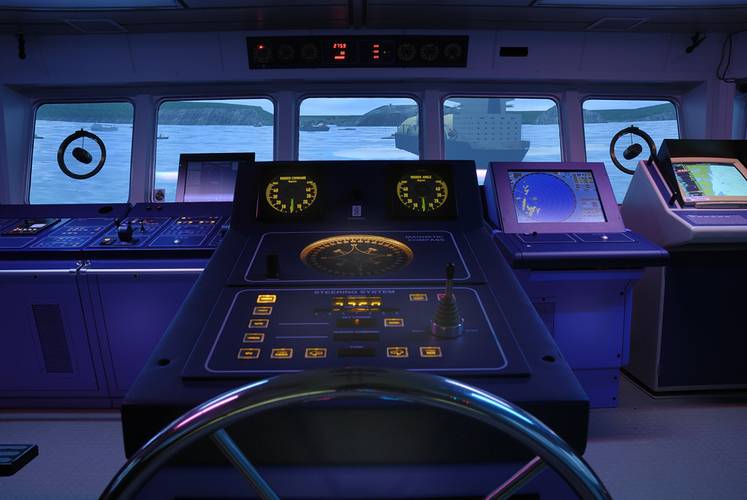
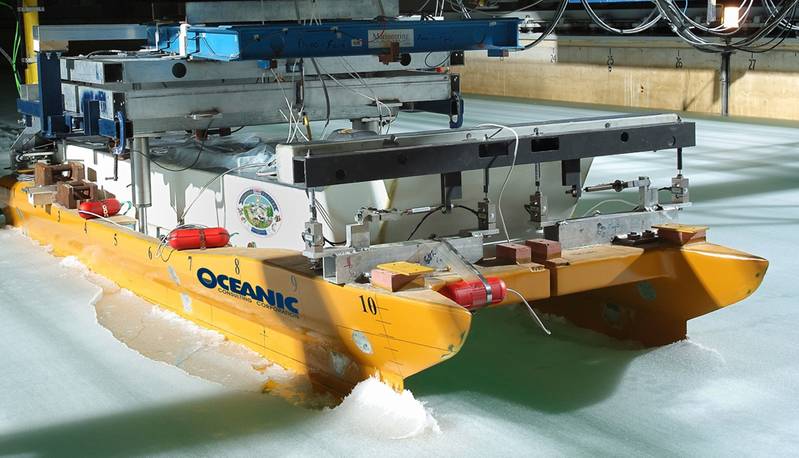


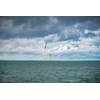
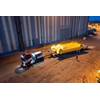
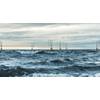
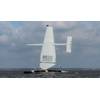









 February 2024
February 2024



